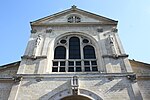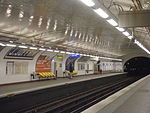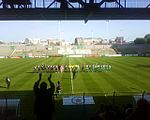Thiers wall

The Thiers wall (Enceinte de Thiers) was the last of the defensive walls of Paris. It was an enclosure constructed between 1841 and 1846 and was proposed by the French prime minister Adolphe Thiers but was actually implemented by his successor. The 33 kilometres (21 mi) long wall and ditch made a complete circuit around the city as it stood at the time of the July Monarchy. It was bombarded by the Prussian Army during the Franco-Prussian War, captured by government troops during the Paris Commune and refortified at the start of the First World War. However, by then it had become obsolete as a fortification, was a barrier to the expansion of the city, and the area immediately outside of it, known as "the zone", had become a shanty town. The wall was demolished in the interwar period; its path today can be traced by the Boulevards of the Marshals which originally ran just behind the fortifications and by the Boulevard Périphérique which was later built just outside. A few remnants of the wall can still be seen.
Excerpt from the Wikipedia article Thiers wall (License: CC BY-SA 3.0, Authors, Images).Thiers wall
Rue Francis de Croisset, Paris Quartier de Clignancourt (Paris)
Geographical coordinates (GPS) Address Nearby Places Show on map
Geographical coordinates (GPS)
| Latitude | Longitude |
|---|---|
| N 48.89995 ° | E 2.34695 ° |
Address
Sorbonne Université - Faculté des Lettres, Campus Clignancourt
Rue Francis de Croisset 2
75018 Paris, Quartier de Clignancourt (Paris)
Ile-de-France, France
Open on Google Maps











